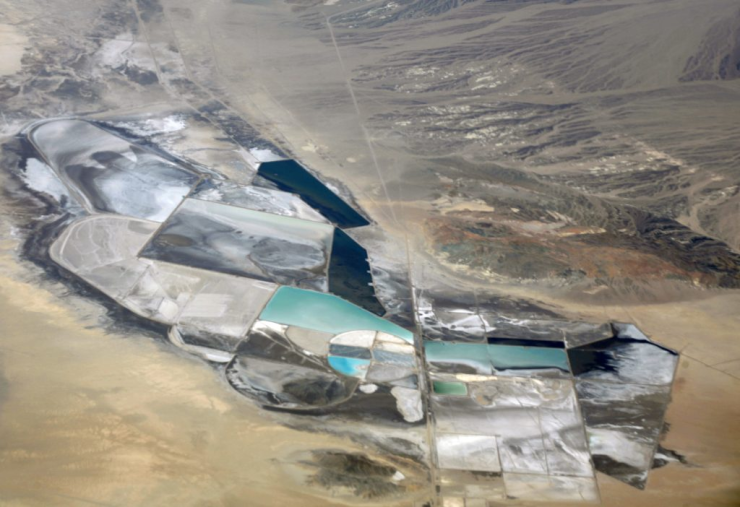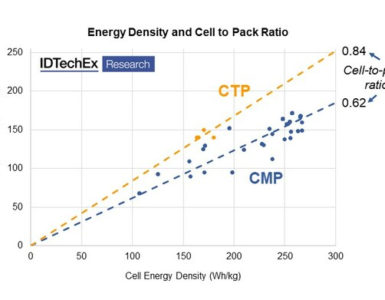The Inflation Reduction Act places a big bet on alternative battery mineral supply chains.
The unexpected Inflation Reduction Act proposes, among numerous other climate provisions, consumer tax credits for electric vehicle (EV) purchases.
The credits aim to make EVs more affordable, but their greatest impact lies in their requirement that a proportion of the battery minerals in qualifying vehicles must have been extracted or processed in the United States or free trade partner countries.
EV consumer tax credits will increase producer demand for new sources of battery metals to capitalize on the provision. The credits therefore tie the future of domestic EV sales to investments in alternative mineral supply chains.
🔥 What about we co-host a webinar? Let's educate, captivate, and convert the battery economy!
Batteries News is the global go-to online magazine for the battery industry, we can help you host impactful webinars that become a global reference on your topic and are an evergreen source of leads. Click here to request more details
The underdevelopment of battery metal supply chains remains a liability for EV deployment in the United States. Critical minerals, including lithium, cobalt, nickel, manganese, and graphite, have value chains rife with underinvestment, political risk, and poor governance.
Diversification of battery supply chains is crucial, and the Inflation Reduction Act provides a needed investment signal for this through its EV consumer tax credit mechanism.
Under the act, vehicles are only eligible for the credit if final assembly occurs within North America and no critical minerals are sourced from a “foreign entity of concern,” including China and Russia.
The tax credit is then split in half based on two further conditions: (1) a percentage of battery metal value must be extracted or processed in the United States or in a partner country with a free trade agreement (FTA), or sourced from material recycled in North America; and (2) a proportion of battery components must be manufactured in North America.
The supply chain incentives for EV manufacturers are clear. The consumer demand generated by buyers looking to capitalize on the tax credit would provide a strong signal for manufacturers to invest in and secure alternatively sourced minerals.
Yet the incentive becomes moot if a preponderance of automakers are unable to meet these requirements.
This sets a highly ambitious target for alternative mineral supplies within a provision designed to incentivize domestic EV deployment. The tax credit’s initial 40-percent battery sourcing requirement would increase to 80 percent by 2027.
Raising output from domestic and “friend-shored” mineral supply chains is a central objective of the credit; yet, the pace at which the share of qualifying mineral supply is required to increase over a five-year period is remarkable given the current availability of such resources in the United States and FTA jurisdictions.
This is particularly true of upstream extraction, where substantial new supply will need to be brought online despite significant political and regulatory challenges, particularly in the United States.
Even discounting permitting, new mines may take a decade to be brought into production, and a $7,500 consumer credit might be insufficient to summon the massive upfront capital required for new projects given a current average EV consumer price of $66,000.
However, such obstacles are not insurmountable. There are several provisions currently in the text that can be refined to enable the Inflation Reduction Act’s goal of accelerating supply chain activity while expanding the availability of low-cost EVs.
First, the act’s inclusion of processing alongside extraction may alleviate the increasing stringency of sourcing requirements between 2023 and 2027. Processing facilities can be developed far quicker than new mines, ensuring a strong demand signal for new upstream capacity in the United States and FTA partners.
This can support the development of a full-cycle alternative supply chain beyond 2027 while allowing shorter-term relief from the rapid pace of new sourcing requirements.
Second, the inclusion of FTA countries as qualifying sources of mineral supply suggests room to consider several other like-minded partner countries.
Formulating the right trusted partnership model will be crucial in building a supply chain which can support US leadership in EV production while also de-concentrating—and therefore de-risking—the EV battery supply chain.
The United States and FTA countries together may still struggle to account for the entirety of mineral demand within the broader EV industry, both in terms of quantity and type of mineral.
Argentina, for example, a top-five global producer of lithium, does not have an FTA with the United States. Japan, which is set to become a major player in midstream processing, would also be excluded.
To support a robust alternative mineral supply chain, the sourcing provisions of the tax credit should consider the numerous multilateral and bilateral partnerships necessary to make the global supply chain possible, many of which do not include an FTA.
Codifying a means to evaluate these sui generis relationships presents an opportunity to aggregate efforts between Congress and the administration, where partnerships such as the Minerals Security Partnership (MSP), the Energy Resource Governance Initiative (ERGI), and other nascent bilateral partnerships already exist.
Thirdly, clarification is needed about the blanket ban on inputs from “foreign entities of concern,” particularly China. The act proscribes the tax credit for any vehicle where critical minerals were extracted, processed, or recycled in China, which may inadvertently negate the other provisions of the tax credit.
Given China’s dominance throughout the global critical mineral supply chain, the total exclusion of raw materials sourced in China from reaching midstream processing would effectively place access to the credit almost entirely on upstream extraction.
Moreover, the provision would also demand that any FTA or partner country processor that would otherwise allow an automaker to qualify for the credit demonstrate a total separation from the Chinese supply chain, which would require a traceability regime unlikely to reach maturity for some time.
The final legislation should therefore consider whether adopting a similar scaled reduction in inputs from “foreign entities of concern” will allow supply chains to adjust over time while still furthering the goal of a robust, resilient, and secure EV industry.
Ultimately, the Inflation Reduction Act is a significant first step for creating a consumer demand signal for mineral-secure EVs but requires accompanying support for investment in new supply.
Currently, investment is being impeded not by a lack of confidence in future mineral demand, but by uncertainty surrounding the gap between final investment decisions and the pathway to possible returns, reflecting political, regulatory, and economic risk in the effort to challenge existing and dominant producers.
Therefore, the critical next step in this effort is a US and multilateral strategy on extraction and processing for supply chains to develop at the ambitious pace envisioned in the provision.
Without this, the onus to meet these provisions may fall too strongly on automakers, disunifying efforts to stake the United States’ leadership in an electrified future.
READ the latest Batteries News shaping the battery market
The Inflation Reduction Act places a big bet on alternative mineral supply chains, August 8, 2022








